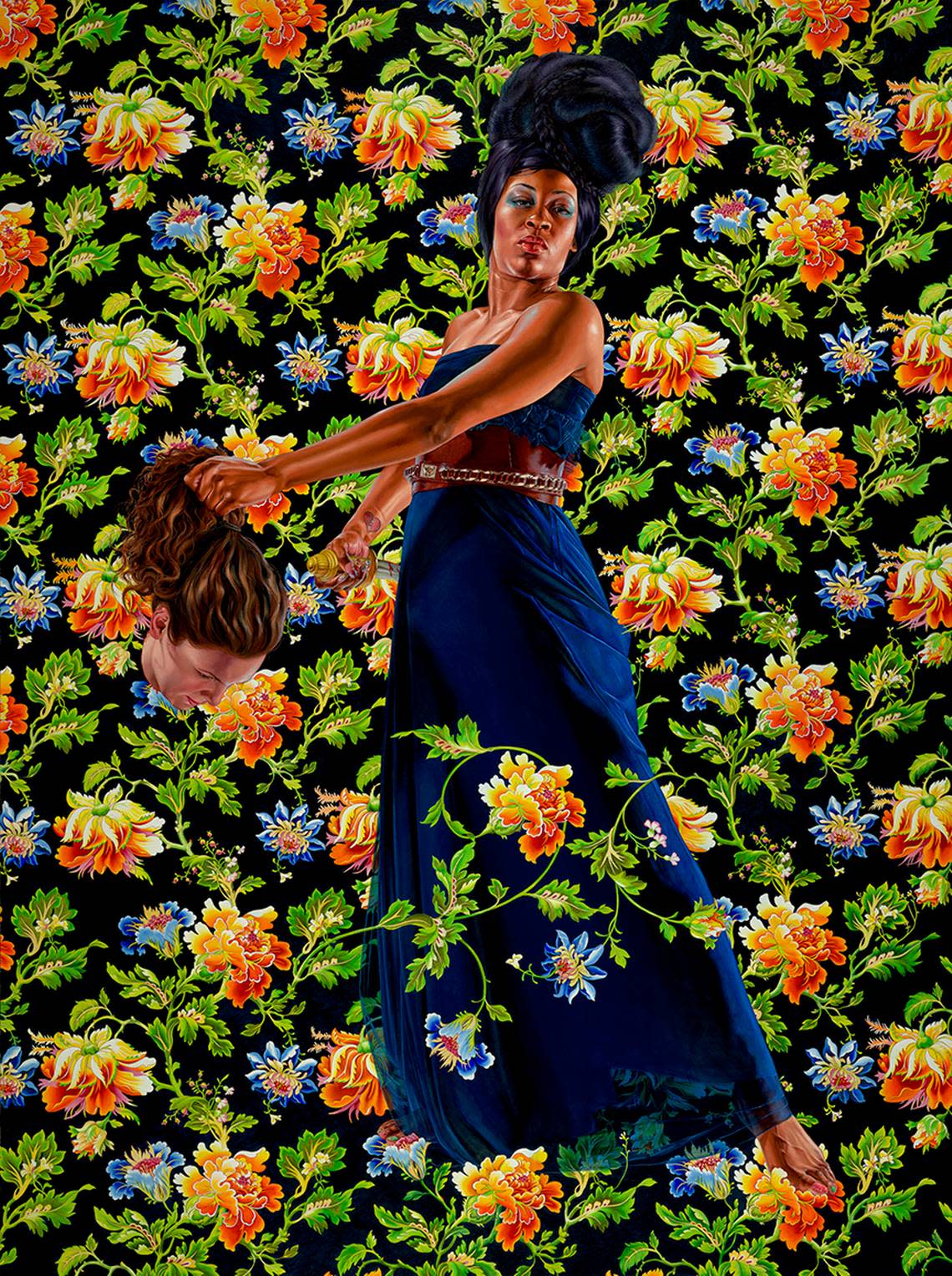Kimbell Art Museum presents ‘Slay: Artemisia Gentileschi and Kehinde Wiley’
In her painting “Judith and Holofernes,” the Italian Baroque artist Artemisia Gentileschi portrays the most dramatic moment of the tale from the apocryphal Book of Judith.
In the dramatic scene, the book’s namesake Judith and her maidservant Abra behead Assyrian general Holofernes in his sleep. With their leader dead, the army flees. Her village is occupied no more.
Like other works by Gentileschi, the painting is of a strong woman exacting revenge. Whether or not one is familiar with the tale, it’s clear from the scene that Judith and Abra are killing him for a reason. Neither show regret in their eyes as Judith beheads the screaming general, awakened by their attack.
More than 400 years later, artist Kehinde Wiley painted a triumphant Judith, but as a Black woman and swinging the head of a white woman.
Now both are on display through Oct. 9 in “Slay: Artemisia Gentileschi and Kehinde Wiley,” a small exhibit at the Kimbell Art Museum organized along with the Capodimonte in Italy, the North Carolina Museum of Art, and the Museum Box.

Gentileschi’s was included in the 2020 exhibition “Flesh and Blood: Italian Masterpieces from Capodimonte Museum.” Wiley’s was featured in the retrospective “Kehinde Wiley: A New Republic” from late 2015 through early 2016, organized by The Modern Art Museum of Fort Worth.
(To complement the show, The Modern is also displaying its work by Wiley, “Colonel Platoff on his Charger,” in the first-floor gallery.)
As artists, Gentileschi and Wiley challenge the white male-dominated fields and iconic images of their generations. Gentileschi was a female artist in the male-dominated Baroque era. (That alone is a feat — and still a problem in the art world.)
Wiley is a gay Black man who borrows from Old Masters paintings and replaces the white figures with Black men and, later, women.
Gentileschi was inspired by Caravaggio and, like him, mastered the most common elements of Renaissance art: lushly painted dramatic narratives and rich contrasts between light and dark.
But, unlike her peers, her works were more realistic. Like Judith and Abra, the central characters were women and often heroines.
Women artists are frequently subject to theories around why they painted what they did as if women only respond to emotion. While male artists’ experiences are not off limits when discussing their work, women still face a double standard in creative work.
Gentileschi could not catch a break despite her finesse. She was sexually assaulted as a teenager.
This leads some scholars to believe the violent act influenced her work, said Nancy Edwards, the Kimbell’s curator of European art and head of academic services.
Wiley also faces a challenge to artists of color and LGBTQ artists: their work is a response to emotion or a reaction to some form of injustice. Making history less white and more inclusive, Wiley’s known explicitly for “street casting” his models. His works integrate contemporary elements, such as sneakers, hoodies, and tattoos, with the traditional garb of the era and are set against colorful wallpaper or ancient backgrounds.
Wiley here references “Judith and the Head of Holofernes,” a 17th-century painting by Giovanni Baglione. Still, he adopted some of Gentileschi’s features. Wiley’s Judith is a tall Black woman in a blue dress stoically clutching her prize: Holofernes’ decapitated head. She wears blue eye shadow, has a heart tattoo, and has blue and red toenails. He met her in a Brooklyn mall without the head, thankfully.
In the two paintings, Edwards said, “the dynamics of power, the struggle for freedom and the triumph of the disenfranchised are fundamental themes in art and literature through the ages.”
